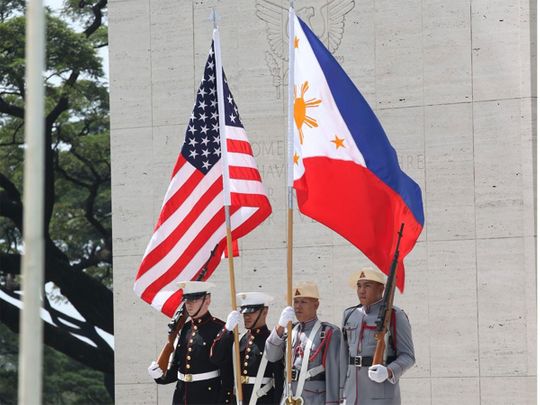
History seems to have taken a full circle especially on the Philippines — US relations. In 1992 the US military was asked to leave Philippines in the wake of widespread nationalist protests. Many Filipinos saw the major US bases as a legacy of colonialism.
Philippines was a US colony from 1898 to 1946. The two countries signed their Mutual Defense Treaty in 1952. The 2014 Enhanced Defense Cooperation Agreement (EDCA) allows US forces to rotate at five agreed Philippine bases to train, construct infrastructure, store and preposition equipment and carry out “other activities as the parties may agree.”
Now, 30 years after sending the US soldiers home, the two countries upgraded the EDCA earlier in the month and allowed four more locations with facilities like at previous five. The accord comes in the wake to bloating Sino-American rivalry in the South China Sea (SCS) and elsewhere.
Many see the Philippines decision driven by the dispute between China and the Philippines over much of SCS, where they have the largest contested area. President Ferdinand Marcos Jr acknowledged it saying that “it’s very hard to imagine a scenario where the Philippines will not somehow get involved.” Philippines is only giving its ally, the US, “the chance to be able to come and help us in any way,” added Marcos.
A welcome development
For the US, the new facilities are a welcome development as much of the new deployments are expected to be in northern Philippines, which is just about 400 nautical miles south of Taiwan. While Marcos’s predecessor Rodrigo Duterte distanced Philippines from the US, he has drawn the two countries even closer.
China has warned that the deepening security alliance between the US and the Philippines could endanger regional stability.
Following the announcement of the new accords, Philippines and the US launched their largest ever 17,600 troops joint military exercises. Australia sent in a small contingent, while Japan and India have sent observer teams.
These drills are the latest demonstration of US reinforcing its arc of alliances in the region.
Even though President Marcos Jr visited Beijing early emphasising closer economic relations with China, signs of his warming up to Washington appeared at the beginning of his term. US Vice-President Kamala Harris and Secretary of State Antony Blinken were among the first visitors.
While Marcos’s predecessor Rodrigo Duterte distanced from the US and pursued independent policies, his bureaucracy and military remained spiritually aligned to the US narrative. By the end of his tenure, he too showed signs of fatigue.
It is hoped that President Marcos recognises the value of a partnership with the US as a means of preventing potential encroachment by China. While it is true that military cooperation may create temporary job opportunities, recent interventions have shown that this is not a sustainable solution.
It should also be acknowledged that the US may not have the same level of economic resources as China to support the development of its partner countries. As we see the positive effects of China’s Belt and Road Initiative, it becomes clear why they have become a major trading partner for many countries.
Sajjad Ashraf served as an adjunct professor at the Lee Kuan Yew School of Public Policy, National University of Singapore from 2009 to 2017. He was a member of Pakistan Foreign Service from 1973 to 2008 and served as ambassador to several countries.








